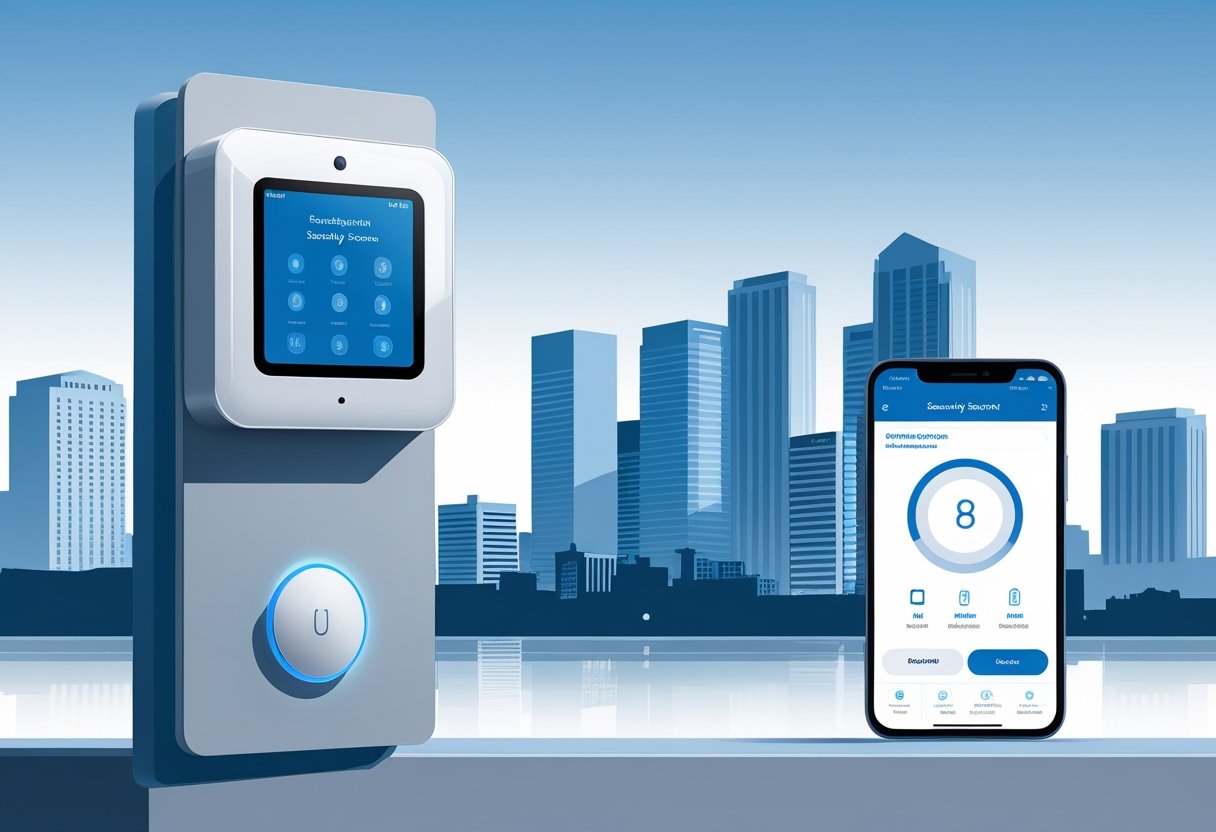An addressable fire alarm system offers advanced technology that can significantly enhance fire safety in your property. These systems provide precise location detection and faster response times, making them particularly beneficial for larger buildings or complex facilities. With each device uniquely identifiable, you can quickly pinpoint the source of any alarm, reducing confusion during emergencies.
While the advantages are clear, it’s essential to consider both the pros and cons before making a decision. Addressable systems often come with a higher initial investment compared to conventional systems, which may raise concerns for you if budget constraints are a factor. However, the increased functionality and reliability can lead to long-term savings through reduced maintenance costs and improved safety.
In the greater Houston area, you have access to professionals who can guide you through the specific needs of your property, ensuring that you select the most suitable fire alarm system. Understanding how an addressable fire alarm system works and what it offers will empower you to make an informed choice regarding your fire safety needs.
Understanding Addressable Fire Alarm Systems
Addressable fire alarm systems offer advanced detection and monitoring capabilities, allowing for precise identification of fire-related incidents. They utilize a network of devices, ensuring efficient communication and quick response. The following sections will explain how these systems function, their key components, and the pivotal role of control panels.
How Addressable Fire Alarm Systems Work
An addressable fire alarm system operates through a network of interconnected devices, each assigned a unique digital address. This allows the system to pinpoint the location of a detected event, whether it comes from a smoke detector, heat detector, or manual pull station.
When a device detects smoke or heat, it sends a signal to the control panel. The control panel interprets this signal based on the device's address, ensuring rapid identification of the device's location, thus facilitating quicker emergency responses. This advanced system minimizes false alarms, providing additional assurance to building occupants.
Key Components of Addressable Fire Alarm Systems
Key components of addressable fire alarm systems include:
- Smoke Detectors: These devices detect smoke and alert the control panel about potential fires.
- Heat Detectors: They sense changes in temperature and provide an added layer of protection.
- Manual Pull Stations: These are strategically placed throughout the facility, allowing occupants to manually trigger the alarm in case of an emergency.
- Control Panel: As the heart of the system, it manages communications and processes signals from all devices.
Each component plays a critical role in enhancing safety, ensuring that you have the necessary tools in emergencies. The integration of these elements ensures a comprehensive fire safety system tailored for your facility.
Role of Control Panels
Control panels are essential in an addressable fire alarm system. They receive data from each device and interpret it based on the unique addresses assigned. This facilitates a real-time understanding of the situation within the facility.
In case of an alarm, the control panel activates a response protocol, notifying emergency services and providing location-specific information. It often includes features for monitoring system integrity, enabling maintenance alerts when devices malfunction. This ensures your fire alarm system remains functional and reliable, prioritizing safety in your building.
Pros of Addressable Fire Alarm Systems
Addressable fire alarm systems offer distinct advantages that significantly enhance fire protection in various settings. These benefits include precise monitoring, self-diagnostic capabilities, scalability suited for commercial buildings, and customizable fire safety solutions.
Precision and Fast Emergency Response
One of the standout benefits of an addressable fire alarm system is its precision. With each device assigned a unique digital address, you can quickly identify the exact location of a triggered alarm.
This capability allows emergency responders to act swiftly, minimizing the time it takes to manage a fire situation. By pinpointing the specific device that triggered the alarm, you'll reduce confusion, enabling a faster and more effective evacuation process.
Self-Diagnostics and Easy Maintenance
Addressable fire alarm systems come equipped with self-diagnostic features that streamline maintenance. These systems can regularly check their components for functionality, generating reports on device status.
If a fault is detected, you'll receive real-time notifications, enabling prompt repairs. This proactive approach helps ensure that your fire safety systems remain in optimal condition, significantly enhancing the reliability of your fire protection measures.
Scalability for Commercial Buildings
Scalability is a crucial aspect of addressable fire alarm systems, particularly for commercial buildings. Whether you're managing a single facility or multiple locations, you can easily expand your system as needed.
By adding new devices to the existing network without major rewiring, you ensure fire safety compliance across all zones. This flexibility allows for tailored solutions that grow with your operations, ensuring that your fire detection capabilities match your building’s evolving needs.
Advanced Customization and Flexibility
The level of customization available with addressable fire alarm systems makes them particularly appealing. You can tailor alerts, zones, and device settings to fit your specific requirements.
This flexibility ensures that the system aligns with your unique fire safety strategy. Whether you need additional features or specific configurations, the customization options empower you to design a comprehensive fire protection plan that meets your goals.
Cons of Addressable Fire Alarm Systems
While addressable fire alarm systems offer numerous advantages, there are some drawbacks that you should carefully consider. These include higher installation costs, increased complexity in programming and maintenance, and potential compatibility issues with existing systems.
Upfront Installation and Equipment Costs
One of the major cons of addressable fire alarm systems is the upfront cost associated with their installation and equipment. Unlike conventional systems, addressable systems require specialized hardware, which can significantly raise initial investments. This includes unique sensors, a central control panel, and advanced wiring.
Costs can vary depending on the size and complexity of your building. For larger properties, these expenses can escalate quickly. While you may save on long-term maintenance, the initial budget may strain your resources.
Complexity of Programming and Maintenance
Addressable fire alarm systems are inherently more complex than conventional alternatives, which can lead to challenges in programming and maintenance. The system's programming requires specialized knowledge to ensure that it functions correctly and efficiently.
If issues arise, repairs may take longer and necessitate trained technicians familiar with your specific system. This complexity can lead to increased labor costs over time, as finding qualified professionals may be more difficult in the greater Houston area.
Potential for System Compatibility Issues
Another consideration is the potential for compatibility issues when integrating new addressable fire alarm systems with existing equipment. If your property already has conventional fire alarm components, adapting or upgrading may be more complicated than anticipated.
Not all addressable systems seamlessly interface with pre-existing devices, which may require additional expenditures or modifications. It’s crucial to evaluate your current setup before making a transition, as this could lead to unforeseen costs and inefficiencies in ensuring a comprehensive fire safety solution in your building.
Comparison: Addressable Versus Conventional Fire Alarm Systems
When choosing between addressable and conventional fire alarm systems, it's important to consider factors like detection accuracy, false alarm reduction, and system expansion capabilities. Each system has its strengths and weaknesses that can significantly impact safety and efficiency.
Detection Accuracy and Location Identification
Addressable fire alarm systems excel in detection accuracy. Each device in an addressable system has a unique digital address, allowing the control panel to pinpoint the exact location of a triggered alarm. This feature enables faster response times, as emergency personnel can be directed to the precise area that requires attention.
In stark contrast, conventional fire alarm systems utilize zones. If an alarm is triggered, the entire zone is activated, making it challenging to identify the exact location of the problem. This can lead to delays in response and may put lives at greater risk.
False Alarm Reduction
One significant advantage of addressable fire alarm systems is their ability to reduce false alarms. These systems can differentiate between various levels of smoke or heat, allowing them to determine whether an alarm should be activated. In the event of a faulty device, the system can also provide notifications specifying the device in question.
Conversely, conventional fire alarm systems are more prone to false alarms due to their simpler design and lack of intelligent features. When a single device in a zone activates, it triggers the entire zone, which can lead to unnecessary evacuations and disruption.
System Expansion and Scalability
Scalability is another critical consideration. Addressable fire alarm systems are designed with expansion in mind. You can easily add new devices without major alterations to the existing setup. This feature makes it suitable for growing businesses or properties that may require additional protection over time.
In comparison, conventional fire alarm systems can face challenges when it comes to expansion. Adding new devices often requires extensive rewiring and can disrupt the existing system. This limitation could result in higher costs and extended downtime for facilities that need to scale their fire safety measures effectively.
Applications and Suitability for Different Buildings
When selecting a fire alarm system, it's crucial to consider the specific needs of your building. Addressable fire alarm systems offer distinct advantages for various types of structures, catering to both commercial and residential requirements.
Commercial Buildings and Complex Facilities
In commercial settings, such as office buildings and shopping malls, addressable fire alarm systems become essential due to their advanced features. These systems allow for precise location identification of alarms, enabling quicker response times during emergencies.
In large facilities, addressable systems can monitor multiple zones, providing real-time information on alarms and system status. This is vital for effective fire safety management, especially in high-traffic areas where rapid evacuation is critical.
Additionally, with the ability to integrate with other safety systems, addressable fire alarms contribute to a comprehensive safety strategy, ensuring that your commercial property remains compliant with fire regulations.
Small Buildings and Residential Properties
For smaller buildings and residential properties, the needs vary significantly compared to larger commercial spaces. While a conventional fire alarm system may suffice, addressable systems can still offer benefits for safety-conscious homeowners.
If your residence has multiple levels or unique layouts, an addressable fire alarm provides detailed information, helping you understand the specifics of an alarm's location and nature. This can be especially reassuring in multi-family dwellings or homes with elderly residents.
Although initial costs may be higher, the long-term reliability and functionality can be worth the investment. These systems can enhance safety by ensuring that every corner of your property is adequately monitored.
Frequently Asked Questions
Addressable fire alarm systems offer several advantages and complexities compared to conventional systems. Exploring key areas such as advantages, wiring complexity, communication protocols, and brand-specific benefits can help you make informed decisions about your fire safety solutions.
What are the advantages of using an addressable fire alarm system over a conventional one?
Addressable fire alarm systems provide precise monitoring. Each device has a unique address, enabling the fire control panel to identify the exact source of an alarm. This capability leads to faster response times, reduced false alarms, and better situational awareness for building managers.
How does the wiring complexity of addressable fire alarm systems compare to conventional systems?
The wiring complexity in addressable systems can be greater than in conventional systems. While conventional alarms often require extensive wiring to connect multiple zones, addressable systems utilize a single loop for several devices, allowing for more efficient installation and easier troubleshooting.
Can you explain the communication protocol used in addressable fire alarm systems?
Addressable fire alarm systems typically use digital communication protocols. These protocols allow devices to send and receive information, such as alarm signals and device status, in real-time. This continuous communication enhances system reliability and provides critical data for maintenance.
What are the limitations of a semi-addressable fire alarm system compared with a fully addressable system?
Semi-addressable systems combine features of both conventional and addressable systems but lack full flexibility. These systems may identify device locations by zone rather than individually. This can hinder quick identification during emergencies, limiting their effectiveness compared to fully addressable systems.
How does an addressable fire alarm panel enhance system management and maintenance?
An addressable fire alarm panel simplifies system management by providing detailed diagnostics and reporting capabilities. You can monitor the status of each device and quickly identify issues, making regular maintenance tasks more efficient and less time-consuming.
.svg)



.svg)


.svg)



